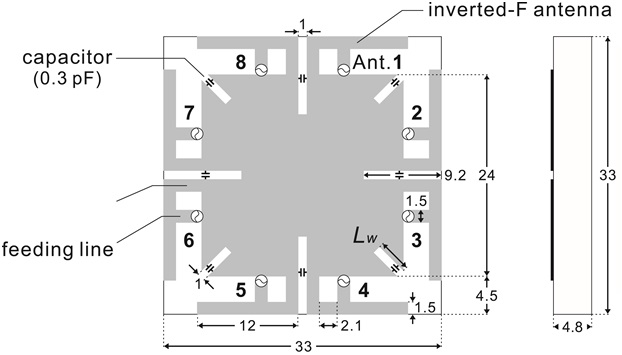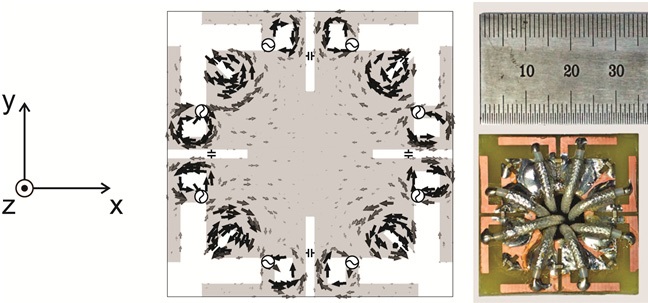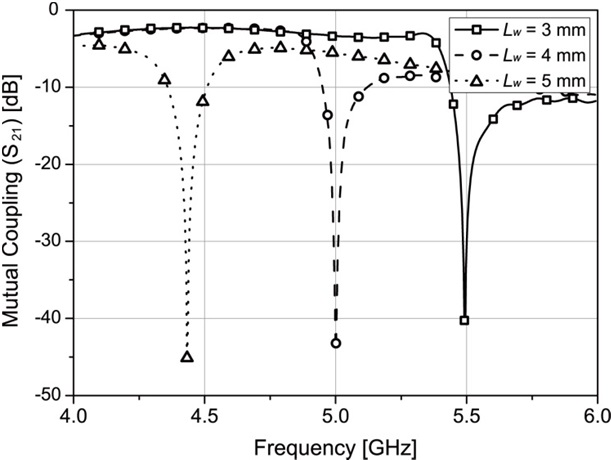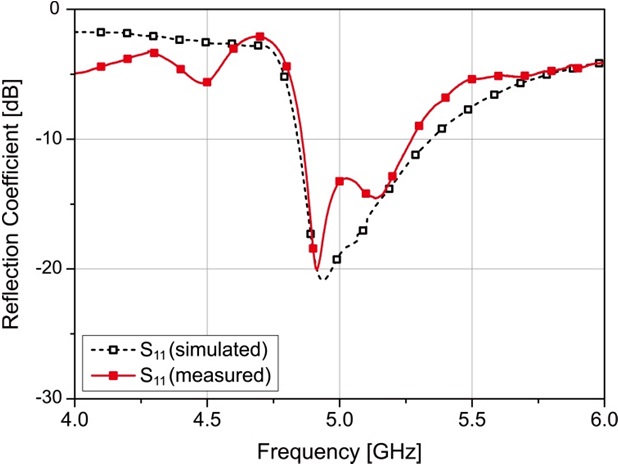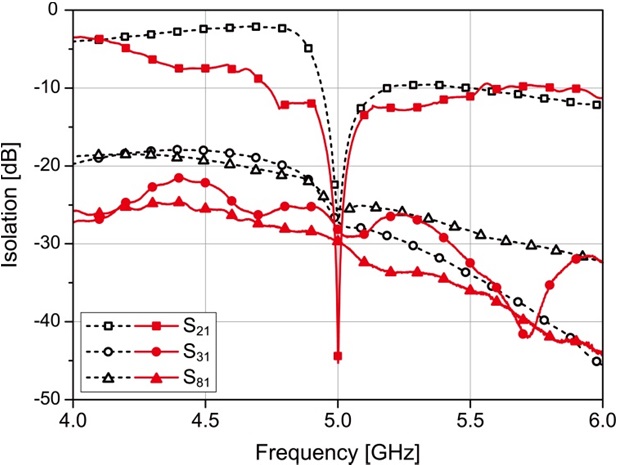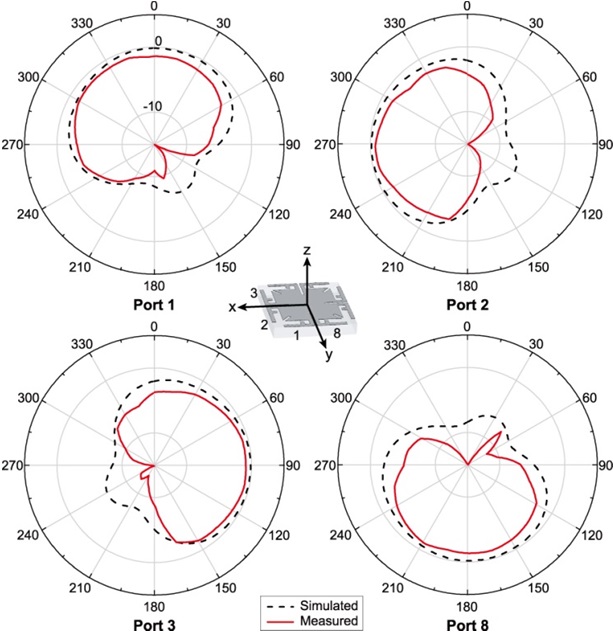



In multi-path environments, a high channel capacity is required in order to send more data in the desired direction. A multi-input multi-output (MIMO) antenna exploits multiple antenna elements to achieve a higher channel capacity that is proportionate to the number of antenna elements [1]. The conventional approach for MIMO applications is to arrange the antennas over more than half of the wavelength to avoid correlation [2]; thus, it extends the physical size of the antenna. Moreover, increasing the number of antenna elements in a mobile device affects MIMO performance due to mutual coupling between antennas.
Several MIMO antenna designs have been proposed to minimize the mutual coupling between antenna elements and to simultaneously decrease the antenna size. The basic approach is to increase the space between antennas, but the space is limited, especially for mobile applications. Decoupling networks [3, 4], the slit pattern [5], the parasitic element [6], and the electromagnetic band gap (EBG) [7, 8] have been analyzed; however, these methods require additional space on an antenna. In this paper, we propose a compact low-profile planar MIMO antenna that unites eight inverted-F antennas with an isolationenhanced structure. We designed the proposed antenna to achieve high isolation between the antenna elements and we verified the antenna's function by identifying the surface current and radiation patterns.
II. DESIGN OF THE PROPOSED ANTENNA
The antenna shown in Fig. 1 was designed by expanding the isolation-enhanced structure with the slot and capacitor, as described in [9]. The proposed antenna is fabricated on an FR4 substrate; the size of the antenna is 33 mm× 33 mm, which is smaller than the conventional
The 5-GHz surface current of the proposed antenna is depicted in Fig. 2. A slot and capacitor pair is located between two antenna elements. As the slot can be regarded as an inductor, the inductor with a 0.3-pF capacitor causes LC resonance. The resonant frequency of the LC resonance decreases when the slot length located on the four corners (
III. SIMULATED AND MEASURED RESULTS
The return loss and isolation of the proposed antenna are measured with an Agilent 8722ES network analyzer in the measurement range of 4 - 6 GHz. The
Fig. 6 shows the simulated and measured radiation patterns at 5 GHz for ports 1, 2, 3, and 8 in the proposed antenna. The radiation patterns of the inverted-F antennas that radiate in the electrical field are determined by the direction of the upper arm. The radiation patterns of the antenna elements differ from each other. As can be seen, the radiation patterns of adjacent antenna elements are dissimilar enough to radiate individually with a peak gain of −1.65 dBi. Th erefore, it is inferred that the proposed antenna has eight different radiation patterns. Table 1 summarizes the specifications of the multi-port compact MIMO antenna and it also shows the number of integrated antenna elements compared with other previous works. The proposed antenna has attractive features such as approximately 30-dB isolation using LC resonance and wide coverage on the azimuth plane using eight antenna elements.
[Table 1.] Comparison between compact MIMO antennas
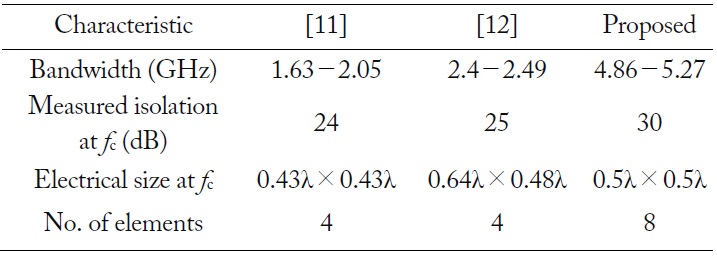
Comparison between compact MIMO antennas
In this paper, we propose a compact low-profile MIMO antenna that integrates multiple antenna elements with an isolation-enhanced structure employing a slot and capacitor for small mobile applications. Our experimental results verify the feasibility of the design incorporating eight antenna elements in a very small area. The proposed antenna is easy to implement within a planar structure and has a high isolation characteristic with a simple slot and capacitor structure. The proposed antenna can be utilized to transfer data with high channel capacity within the operating frequency band.
